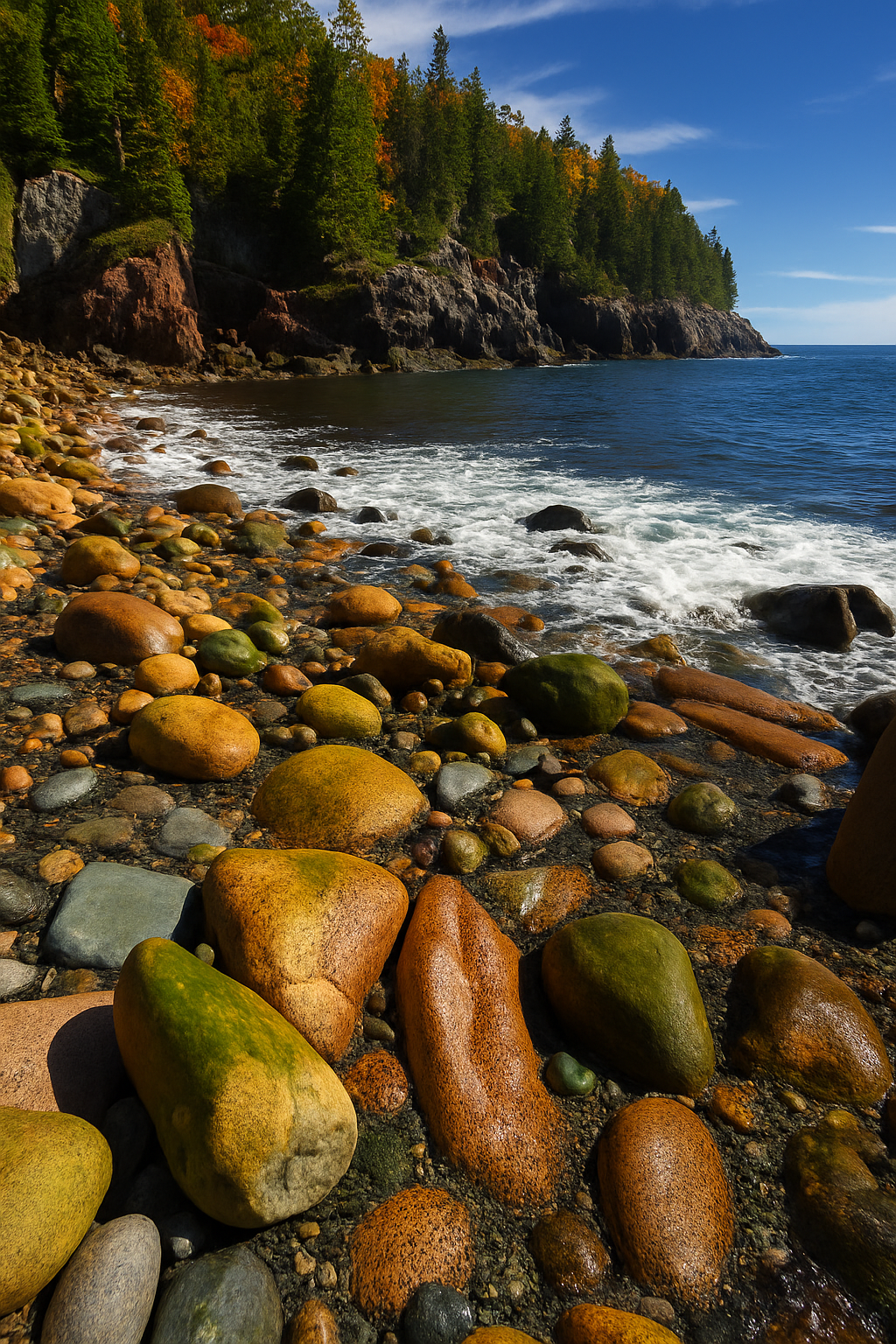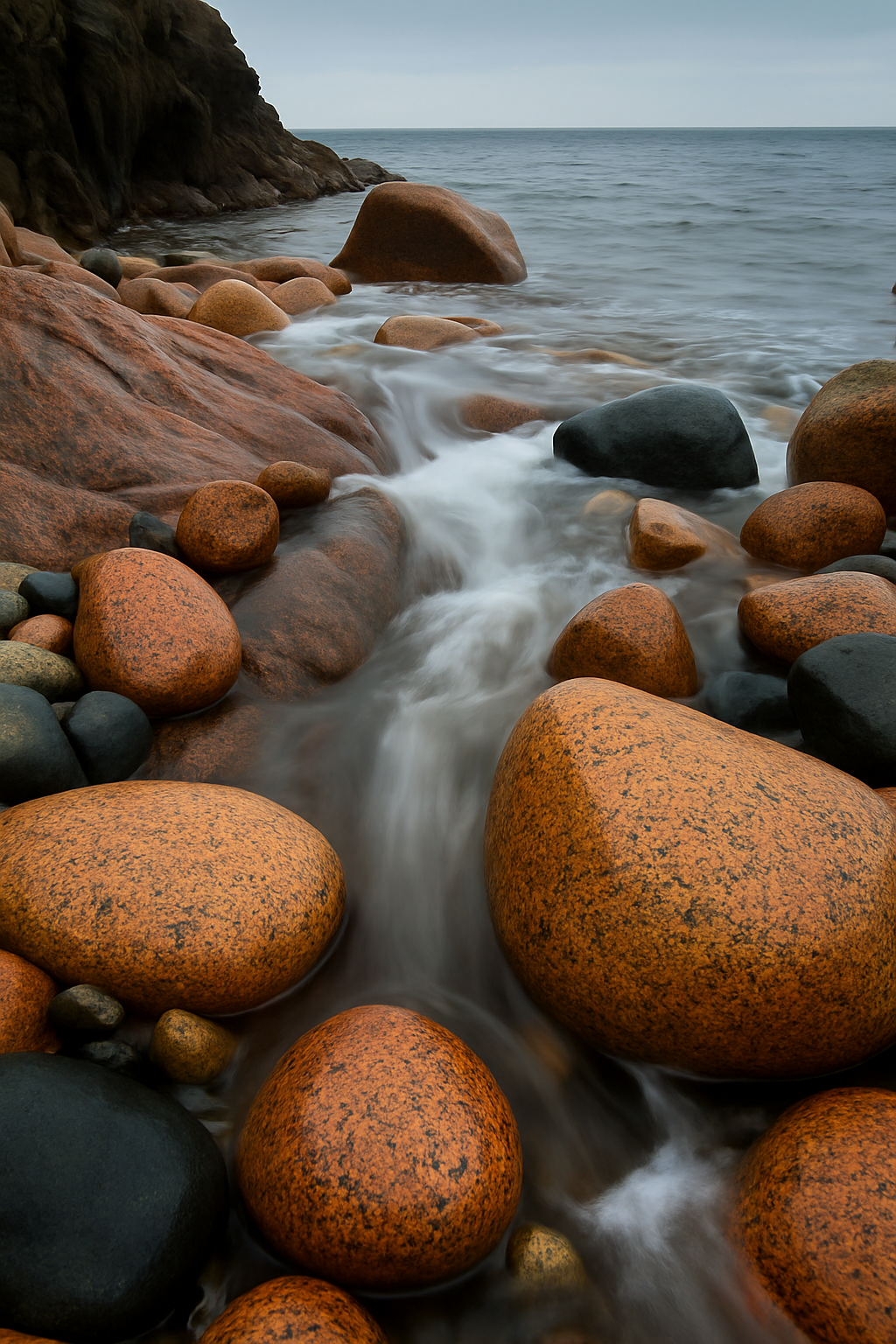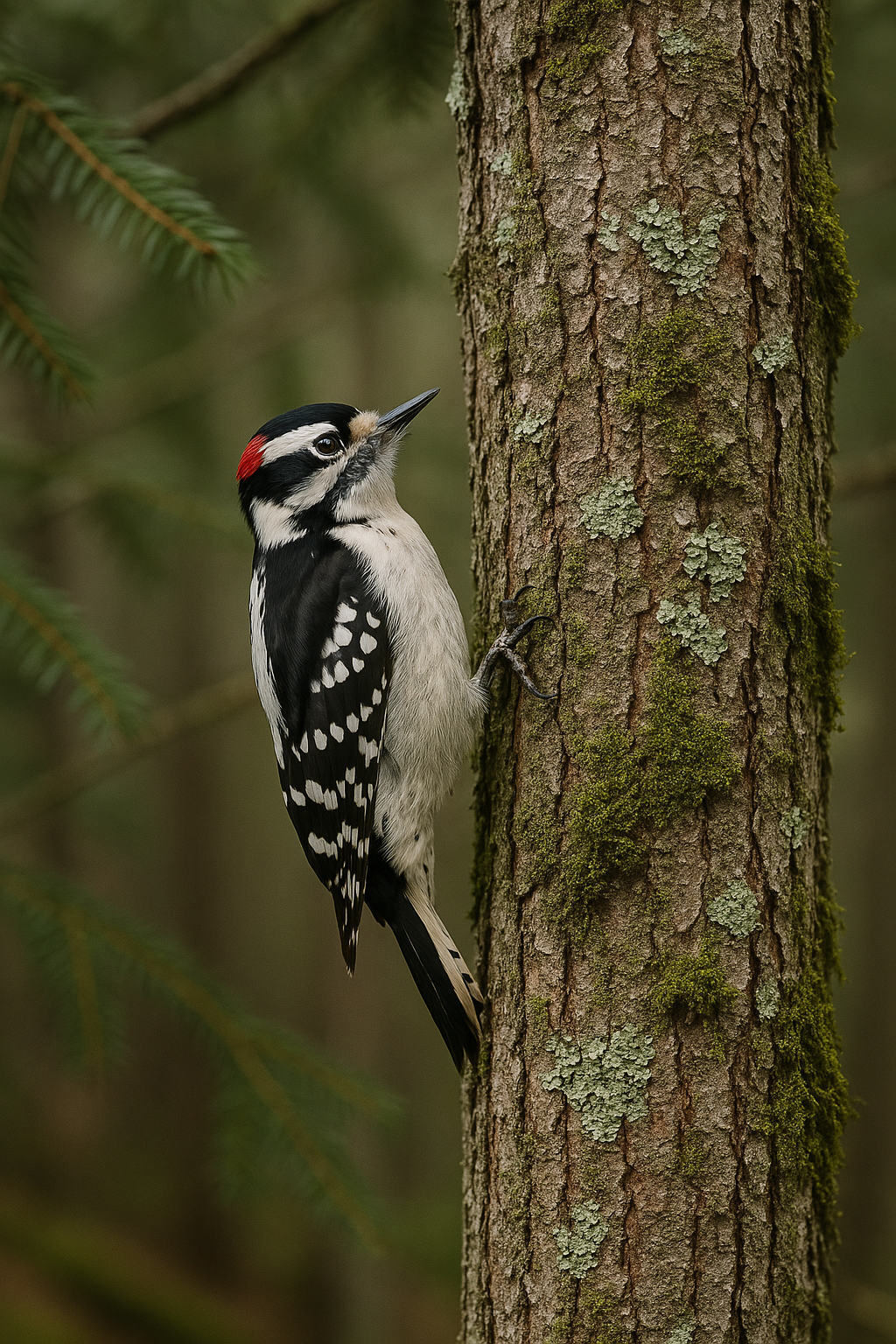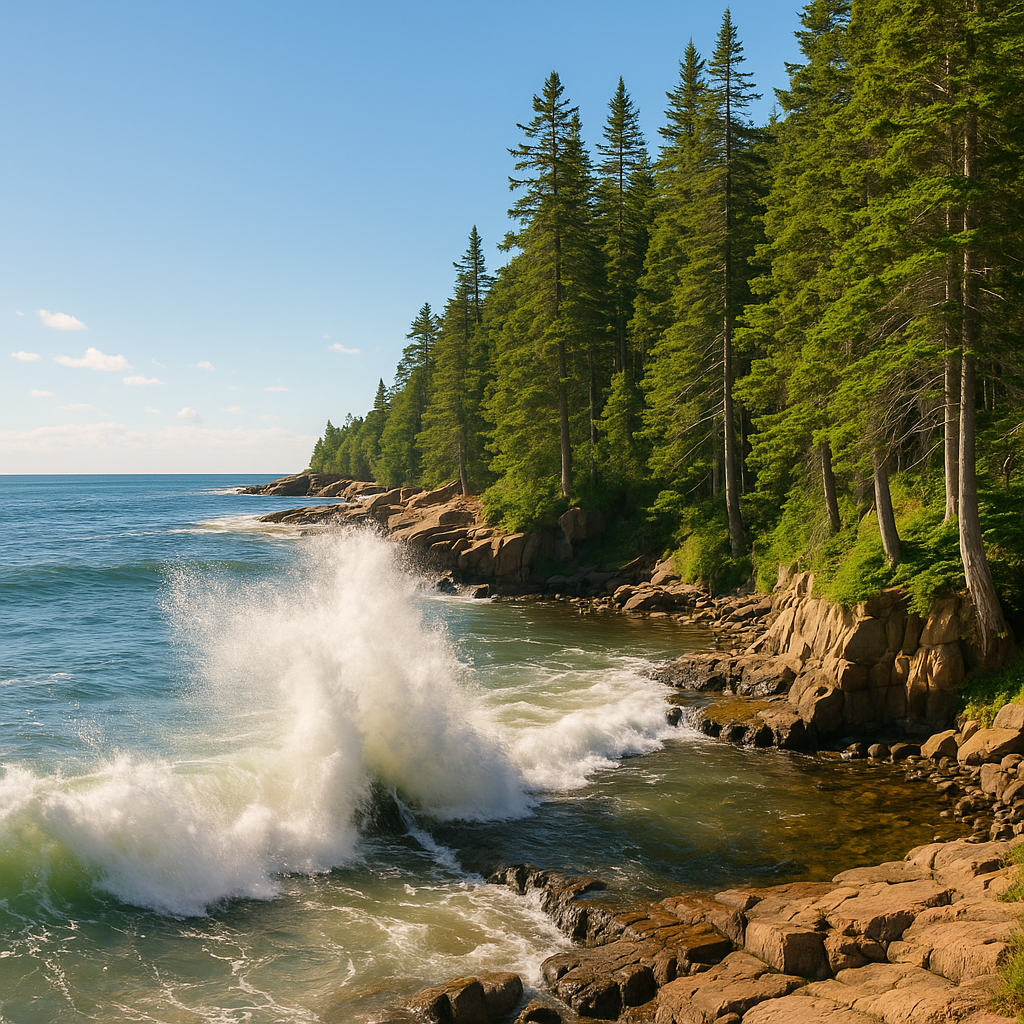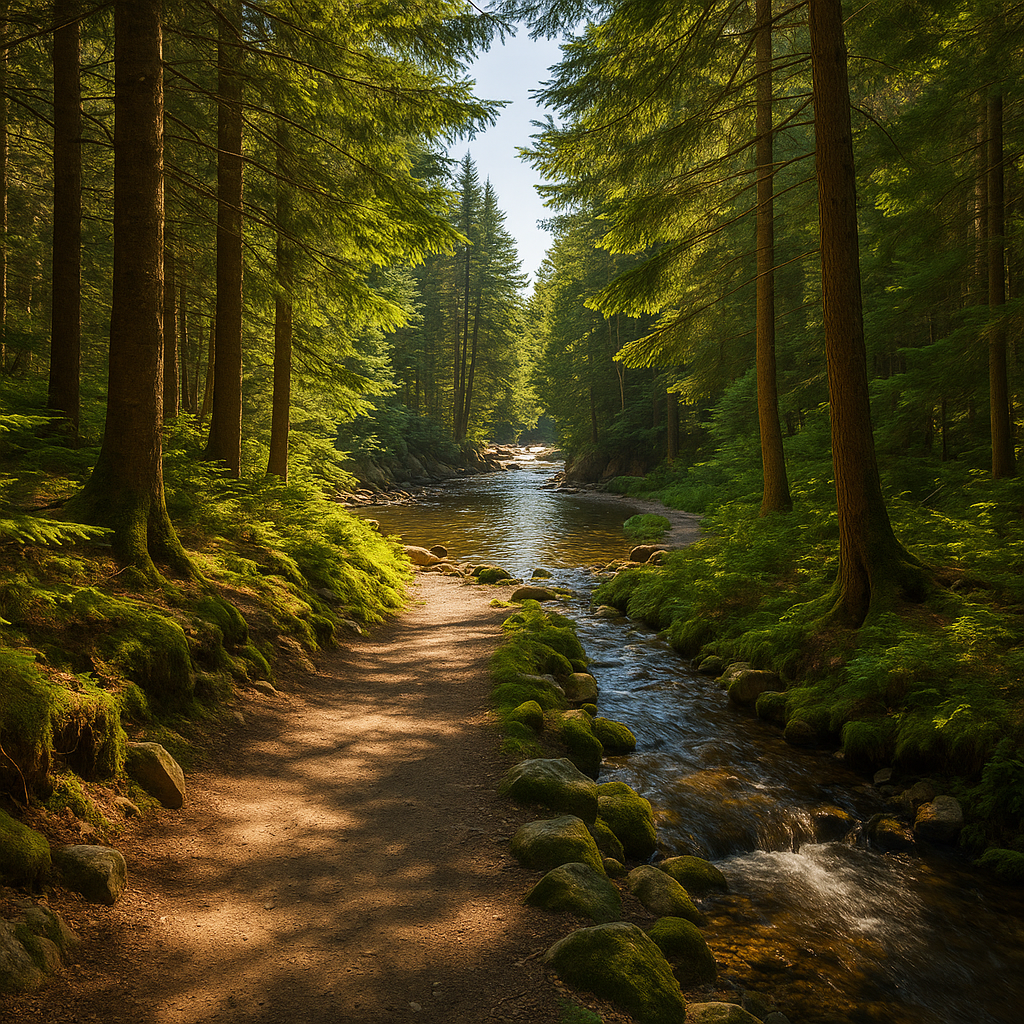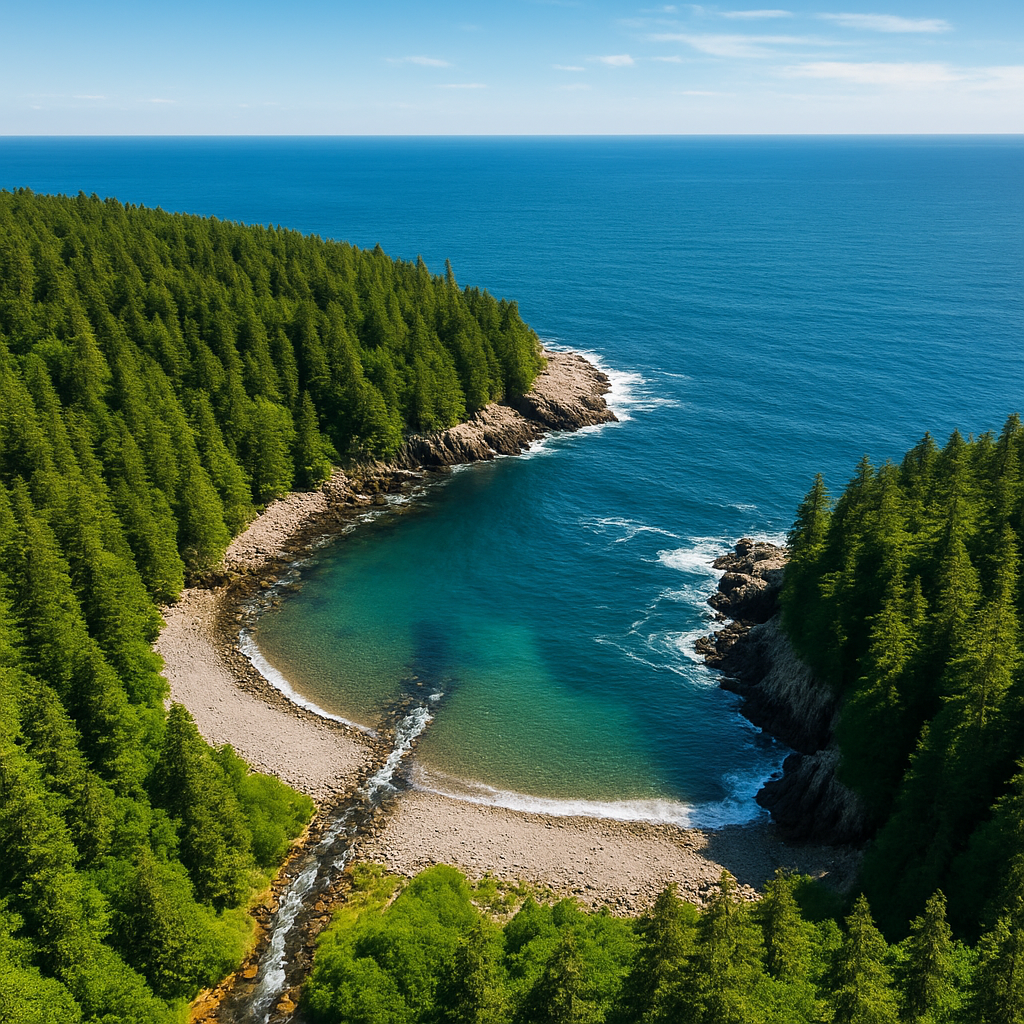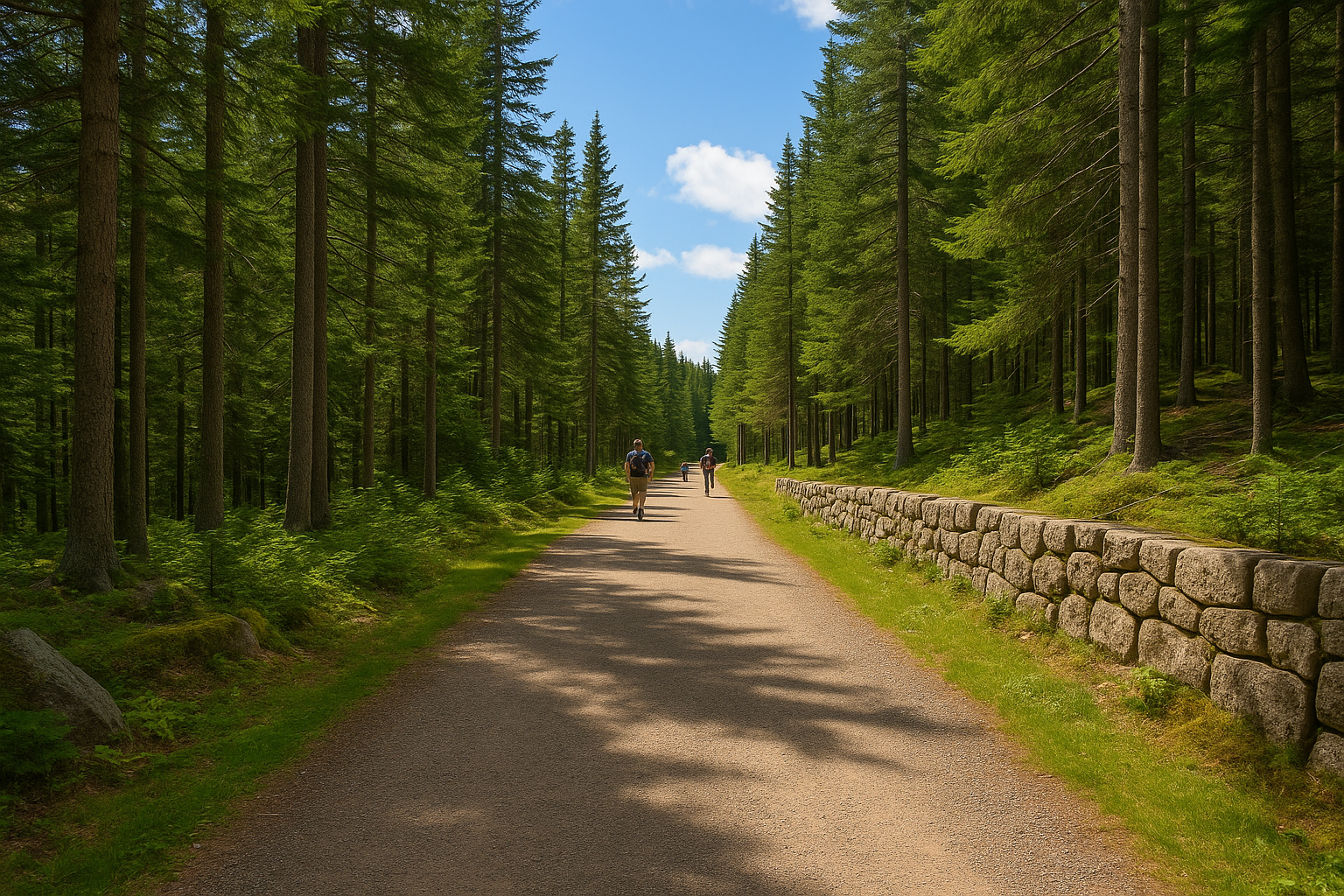Hunters Beach Acadia National Park – A Hidden Rocky Cove Gem
Hunters Beach in Acadia National Park is the kind of place you only discover if you know where to look — and once you find it, you may never want to leave. Tucked away on the park’s quieter southern coast, this small cove is unlike the sweeping sandy stretches many visitors imagine when they think of a beach. Instead, Hunters Beach is all about its cobbled shoreline, forested backdrop, and the soothing sound of waves rolling over smooth, rounded stones.
The setting feels almost cinematic — a narrow stream flows down from the woods, spilling into the ocean, while the surrounding spruce and fir trees create a sheltered, almost secretive atmosphere. It’s a world away from the bustle of Bar Harbor or the popular hot spots along Park Loop Road, making it the perfect escape when you want a moment of calm.
The Famous Cobbled Shoreline of Hunters Beach Acadia National Park
The defining feature of Hunters Beach is its shoreline — a natural mosaic of rounded granite cobbles that range in size from your palm to your backpack. Centuries of wave action have smoothed these stones into near-perfect ovals, creating a natural soundtrack as the tide rolls in and out. Each wave rattles the rocks softly, producing a sound that’s both calming and strangely hypnotic.
Walking across the cobbles can be a workout for your balance, so take your time and enjoy the experience. Many visitors like to hunt for uniquely colored or patterned stones — though remember, Acadia National Park’s regulations prohibit removing rocks, so admire them in place. If you visit at low tide, you’ll find tidepools nestled between larger stones, each one offering a microcosm of ocean life.
A Stream Meets the Sea
One of Hunters Beach’s most charming and photogenic features is the small stream that flows directly into the cobbled cove. The stream originates in the wooded hills above and winds through a shady forest of spruce and fir before spilling over the granite stones and mingling with the Atlantic.
The meeting of fresh and salt water creates a lively and ever-changing ecosystem. Birds patrol the waterline for food, crabs scuttle among the smooth rocks, and in the warmer months you may even see dragonflies hovering above the freshwater pools. In spring and early summer, the current runs stronger, with crystal-clear water sparkling in the sun as it tumbles toward the sea. By late summer and fall, the stream slows to a gentler trickle, leaving behind small pools that mirror the sky.
This natural confluence adds a tranquil soundtrack to the beach — the burble of freshwater over stones blending with the rhythm of ocean waves. It’s the perfect spot to pause, take a photograph, or simply enjoy the sense of connection between land and sea.
Hunters Beach Wildlife and Natural Beauty
Hunters Beach Wildlife and Natural Beauty – Hunters Beach is more than just a secluded scenic cove — it’s a quiet refuge for wildlife. Along the shoreline, gulls and cormorants perch on cobbles and patrol the waves, scanning the water for fish. Offshore, the occasional seal may be spotted bobbing in the surf, while overhead, monarch butterflies drift gracefully through on their late-summer migration.
In the surrounding spruce and fir forest, the soundtrack changes. The chatter of red squirrels echoes from the branches, and if you listen closely, you may hear the rhythmic drumming of a woodpecker. The short forest path to the beach feels alive with movement, giving visitors the chance to glimpse both woodland and coastal wildlife in a single visit.
The small stream that empties into the cove adds even more variety to this delicate ecosystem. Its shaded banks host lush green mosses, freshwater insects, and amphibians, creating a vivid contrast to the saltwater life just a few feet away. This mingling of marine and forest habitats makes Hunters Beach one of Acadia’s most rewarding spots for nature lovers and photographers alike.
Tides, Safety, and Best Times to Visit
Tides, Safety, and Best Times to Visit – Hunters Beach is open and accessible year-round, but the atmosphere shifts with the rhythm of the tides. At low tide, more of the cobbled shoreline is revealed, exposing tidepools where small marine creatures and seaweed cling to the rocks. This is the best time to wander carefully among the stones and take a closer look at the life thriving in the intertidal zone.
At high tide, the cove transforms. Waves crash directly against the upper cobbles, filling the air with the sound of tumbling stones and the salty spray of the Atlantic. It’s a dramatic sight, though less forgiving underfoot. Because the rounded rocks can be slippery when wet, it’s wise to check tide charts in advance and wear sturdy shoes with good grip.
For photographers, the best time to visit is early morning or late afternoon, when golden light filters through the surrounding forest and bathes the shoreline in warm tones. Pair that with the motion of an incoming tide, and Hunters Beach becomes a perfect setting for long-exposure shots that capture the magic of Acadia’s quieter corners.
Getting to Hunters Beach
Reaching Hunters Beach is part of the charm, with a short but scenic approach that sets the mood before you even see the ocean. The trailhead sits just off Route 3, tucked between Seal Harbor and Northeast Harbor. It’s marked by a small wooden sign that’s easy to overlook if you’re driving too fast, which is one reason this cove remains a quieter, more intimate spot than Acadia’s larger beaches.
Parking is limited to only a handful of roadside spaces, naturally keeping crowds small. From there, a 0.2-mile forest trail winds gently downhill through a canopy of evergreens. It’s an easy walk for most visitors, but sturdy footwear is recommended since the shoreline itself is rocky.
As you walk, you’ll hear the bubbling stream that runs alongside the path, catch shafts of sunlight breaking through the trees, and feel the salty tang of the Atlantic growing stronger with each step. The moment the forest opens and the cove comes into view, it feels like you’ve discovered a secret corner of Acadia.
Best Photography Spots
Best Photography Spots – Hunters Beach may be small, but it offers endless inspiration for photographers who love to capture the interplay of light, water, and forest. Every angle seems to tell its own story, yet a few vantage points stand out as favorites among those who know the cove best.
Stream Meets Sea – One of the most iconic shots can be found where the freshwater stream empties into the Atlantic. Here, you can frame the glistening brook winding over stones in the foreground with the ocean horizon beyond. On bright days, the moving water sparkles, while on foggy mornings, the scene takes on a moody, atmospheric feel that looks like it belongs on a postcard.
Low Tide Tidepools – When the tide recedes, small pools form among the rocks, creating natural mirrors. These tidepools reflect the sky, clouds, and surrounding spruce forest, giving you a chance to capture both the details of marine life and wide, reflective landscapes. Photographers often crouch low to the ground here, using the pools as creative foregrounds to frame the wider cove.
Cliffside Perspective – For a broader, more dramatic angle, climb carefully a few feet up the surrounding cliffs (always watching your footing). From this elevated perch, you’ll be able to look back over the rounded cove, framed by forested slopes on both sides. This perspective emphasizes the hidden, enclosed feel of Hunters Beach, especially when the light is streaming directly into the cove.
Wave Action on Cobbles – While the cobblestones are slippery, they make for unforgettable long-exposure images. By setting your tripod at the water’s edge and using a slow shutter speed, you can blur the motion of incoming waves washing over the stones. The result is a silky, dreamlike effect where the solid, rounded granite meets the ever-changing motion of the sea.
Hunters Beach rewards patience — light shifts quickly as the sun passes over the treetops, tides rise and fall, and fog rolls in or out. Whether you’re looking for bold wave action, subtle reflections, or quiet details, this small cove delivers an outsized experience for anyone behind the lens.
Nearby Hikes and Attractions
Hunters Beach fits seamlessly into a day spent exploring the quieter side of Mount Desert Island. Its tucked-away setting makes it a natural stop between other scenic highlights, giving you a chance to slow down and recharge before moving on to busier spots.
Seal Harbor Beach – Just a few minutes’ drive north, this sandy beach contrasts nicely with the cobbles of Hunters. It’s a local favorite for a quick swim or a quiet sunbathing spot, with calmer waters and easier access.
Northeast Harbor – A short drive brings you to this charming coastal village, known for its protected harbor filled with sailboats and yachts. Here you’ll find art galleries, boutique shops, and several inviting cafés and restaurants — perfect for rounding out a day of exploration.
Carriage Roads – Several access points nearby connect you to Acadia’s historic carriage road system. These broad, crushed-stone paths wind through forests, around lakes, and across stone bridges, offering some of the park’s best routes for cycling and walking.
Jordan Pond – One of Acadia’s most iconic destinations, Jordan Pond is famed for its crystal-clear water and the twin peaks of the Bubbles rising in the distance. A stop at the Jordan Pond House for their legendary popovers with jam is a tradition for many visitors.
Adding Hunters Beach to an itinerary that includes these spots gives you a balanced mix of activity and calm — a refreshing, quiet break before heading back into Acadia’s more popular destinations.
Hunters Beach - Local Insights
For all its scenic beauty, the greatest gift of Hunters Beach may be its tranquility. Unlike Acadia’s more famous spots, there are no vendors, facilities, or bus tours crowding the cove. Instead, you’ll find the simple pleasures of the rhythmic pulse of the Atlantic and the gentle rustle of spruce trees overhead. The soundtrack here is natural — waves tumbling over stone, seabirds calling, and the soft wind weaving through the forest canopy.
It’s the kind of place where time slows down. Many visitors bring a picnic, choosing a flat rock along the shoreline to spread out a blanket or sit quietly while the tide rolls in. The unspoiled setting encourages a “leave no trace” mindset: pack out your trash, tread lightly, and allow the environment to remain just as you found it.
If you’re based in Bar Harbor or Northeast Harbor, Hunters Beach is the perfect spot to start your day with an early-morning coffee overlooking the water, or to end your evening with a sunset wind-down away from the crowds. The light here shifts beautifully throughout the day — soft dawn colors, bright midday clarity, and a golden glow in the evening.
One note of caution: the cobbles, especially when damp, can be slick and unsteady underfoot. If you’re carrying gear — camera equipment, picnic baskets, or even just your morning thermos — step carefully and wear footwear with good grip. The reward is worth it: serenity, solitude, and a slice of Acadia that still feels like a secret.
Seasonal Experiences
- Spring: Hunters Beach comes alive as fresh greenery lines the short trail, and the small stream gushes stronger from melting snow. The cool air and rushing water create a sense of renewal, making spring one of the most refreshing times to visit.
- Summer: With warm temperatures and calm seas, summer is ideal for relaxing on the rocks, exploring tidepools, or enjoying a quiet picnic by the ocean. Even during Acadia’s busiest months, Hunters Beach remains a peaceful retreat where you can escape the crowds.
- Fall: The forested backdrop erupts in fiery shades of orange, red, and gold, creating a breathtaking contrast with the beach’s gray cobbles. Autumn light also enhances the rugged beauty of the shoreline, making it a favorite time for photographers.
- Winter: Snow blankets the rocks and trees, transforming Hunters Beach into a serene, monochrome wonderland. The rhythmic sound of waves breaking against the icy shore makes winter visits uniquely magical for those seeking solitude.
No matter the season, Hunters Beach offers something distinct — and because it’s a lesser-known destination, chances are you’ll have it mostly to yourself, even in the height of summer.
History and Local Lore
Hunters Beach takes its name from the nearby Hunters Brook, a small stream that winds down from the surrounding hills and empties into the Atlantic at this cobbled cove. The brook itself is believed to have been named after an early settler or family in the area, though the exact origin of the name has faded into the past. Like many place names in Acadia, it reflects the layered history of the island, where European settlers, fishermen, and farmers left behind subtle traces of their presence.
According to local lore, the cove may once have served as a quiet fishing spot, used by residents of Mount Desert Island who sought solitude and shelter from the busier harbors nearby. However, the rugged shoreline of rounded granite cobbles made it unsuitable for docking boats or launching larger vessels, which is perhaps why the beach has remained so untouched by human development. Unlike Bar Harbor’s bustling piers or the well-trodden paths of Jordan Pond, Hunters Beach was left largely to itself.
By the early 20th century, as Acadia National Park began to take shape, the area was folded into its preserved coastal lands. While the official record on Hunters Beach is thinner than some of Acadia’s more famous sites, its story is written not so much by people as by the relentless natural forces of wind, tide, and stone. Every wave that rolls across its cobbles continues a process that began thousands of years ago, when glaciers carved the island and left behind the raw material for its dramatic coastlines.
Standing at Hunters Beach today, you’re reminded that its true history isn’t in old documents or maps, but in the soundtrack of the surf against stone — a reminder of the ancient, ongoing dialogue between land and sea. Visitors who pause here often sense that connection: the way time slows, the landscape speaks, and you become just one more observer in a story far older than human memory.
If you like your Acadia adventures with a side of solitude, Hunters Beach will quickly become a favorite. It’s proof that some of the park’s best experiences are found off the main tourist track — all it takes is a short forest walk to uncover one of Mount Desert Island’s most peaceful hidden gems.
👉 Pack your boots, follow the trail, and let Acadia surprise you with moments you won’t find in any guidebook.
- NPS: Hunters Beach — Official page with details on the cobblestone shoreline, access, and natural features.
- AcadiaMagic: Hunters Beach — Local guide with photos, directions, and tips for exploring this quiet, hidden cove.
